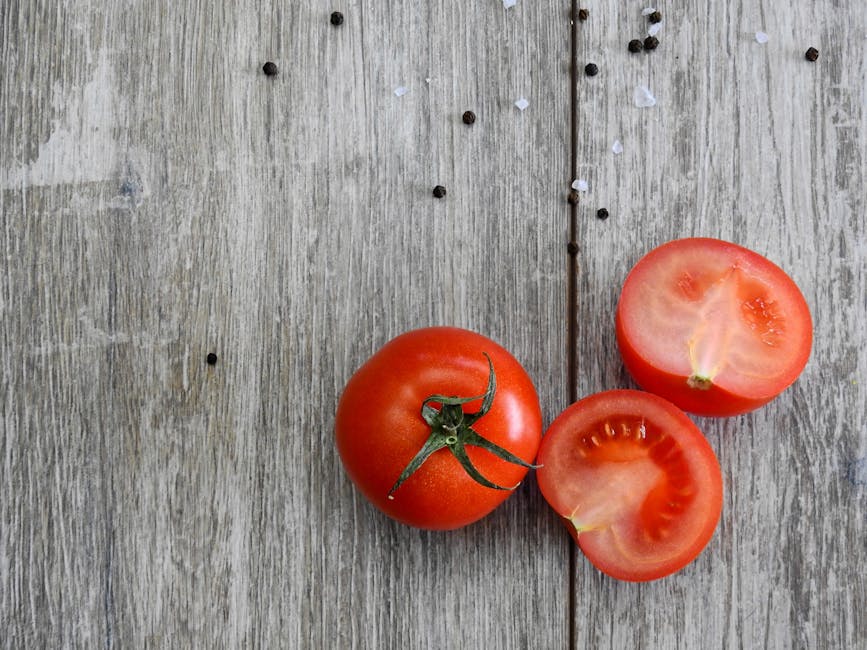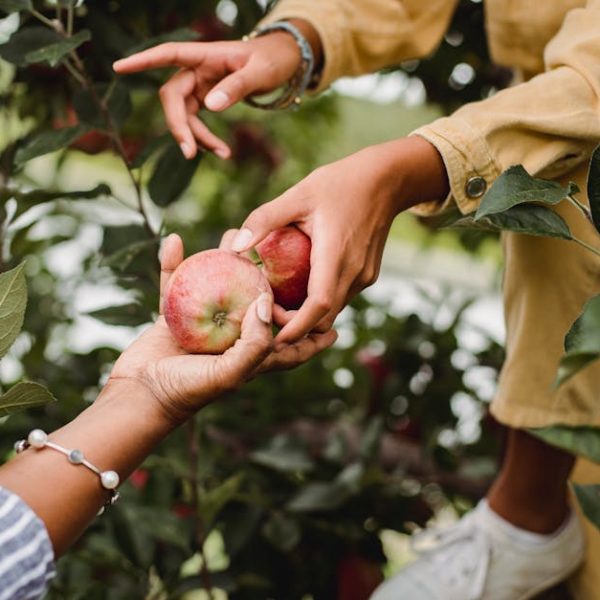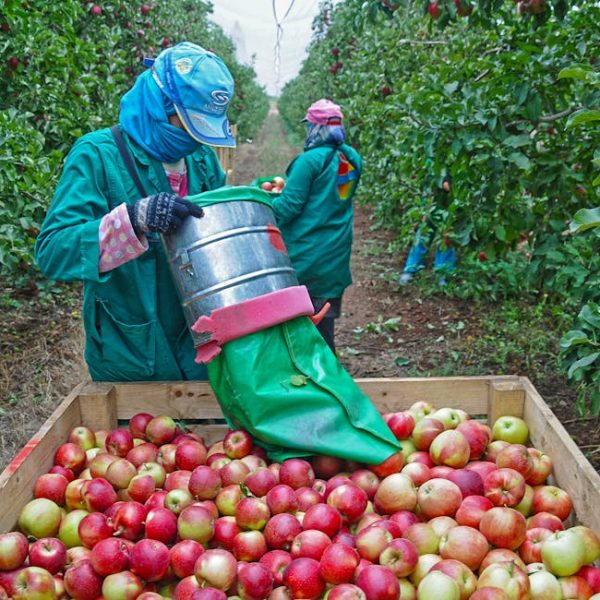Creating a kitchen garden teeming with fresh, colorful vegetables is more straightforward than you might think. Devoting a little time and effort can yield tasty, healthy produce from your backyard, simplifying your trips to the grocery store and adding a rewarding hobby to your routine. We’ll walk you through the steps of growing your own food right at home, covering everything from selecting the right vegetables for your climate to mastering the art of harvesting.
Choose the Right Vegetable for Your Climate
Every vegetable has its favourite season and climatic conditions under which it thrives best. So before you plant those seeds or buy those saplings, be sure to identify the most suitable ones for your regional climate. Factors like temperature, amount of sunshine, and rainfall patterns can significantly influence the success of your vegetable garden.
Consider these climate-friendly vegetables:
- Summer veggies for warm climates: Tomatoes, squash, peppers, eggplant, and cucumbers love sunshine and heat.
- Winter and cool-weather specimens: Broccoli, Brussels sprouts, cabbage, radishes, and kale can weather colder temperatures.
- Hybrid varieties: These can adapt to a range of climates, thanks to years of careful cultivation.
By understanding your local weather patterns, you can choose vegetables that naturally adapt to your environment, reducing the need for high maintenance and increasing your chances of a bountiful harvest.
Preparing Your Vegetable Garden
Don’t underestimate the importance of preparing your garden correctly; this step can make the difference between struggling plants and a thriving vegetable patch. Elements like soil preparation, adding compost, and setting up garden beds correctly can simplify future caregiving and set you up for success. Here are a few easy steps to get your garden ready:
- Test your soil: Get a soil kit to check the acidity and nutrient levels – these impact how well your plants will grow.
- Invest in composting: Rich in nutrients, compost promotes soil fertility, a boon for any vegetable!
- Choose a sunny spot: Most vegetables require a good 6–8 hours of sunlight daily.
- Plan your garden beds: Raised beds work wonders for easy access and good drainage.
These best practices will ensure your garden is in the best shape for planting vegetables.
Proper Planting of Vegetables
Planting vegetables correctly isn’t rocket science, but a few basics can ensure they get off to the best start. Crucial details like seed depth, the gap between plants, initial watering, and temperature requirements warrant careful attention. So here’s a foolproof checklist for your vegetable planting endeavours:
- Prepare the seeds: Buy certified disease-free seeds or plantlets.
- Check seed depth: Different veggies need varying depths – check the seed packets for instructions.
- Space them out: Give your veggies room to grow by allowing enough space between each plant.
- Water wisely: Don’t overwater as it may hinder seed germination. Keep the soil moist but not waterlogged.
Heed these tips, and you’ll have a garden buzzing with the beginnings of fresh, organic veggies in no time.
Appropriate Care and Maintenance for Healthy Growth
Your newly sprouted veggies need love and attention to flourish. Regular accoutrements like watering, pruning, fertilizing, and pest management are essential for curbing disease and promoting healthy growth.
- Watering: Maintain a regular watering schedule. Most veggies benefit from an inch of water per week. Overwatering can lead to diseases and poor root development.
- Pruning and Fertilizing: Remove dead or infected leaves and branches to encourage better growth. Use a low nitrogen, higher phosphorous fertilizer for most vegetables which promotes flowering and fruit production.
- Pest Management: Frequent inspection and organic pesticides can help in early detection and prevention of common pests.
These best practices help strike a balance between good growth and preventing potential issues down the line.
Harvesting Your Vegetables at the Right Time
Getting the timing right on your harvest ensures your vegetables will taste their best and provide maximum nutritional value. Identifying the maturity of your homegrown produce can be a joy in its own right, with the reward being a basket of ripe, aromatic vegetables ready for the kitchen.
Here are harvesting times for popular vegetables:
- Tomatoes: Harvest when they are deep red and slightly soft to touch.
- Squash: Harvest when skin is hard and a deep, solid colour.
- Peppers: Harvest anytime after they reach desired size. The longer they stay on the plant, the hotter they’ll get.
- Broccoli: Harvest when the buds of the head are firm and tight before the heads flower.
- Radishes: Harvest as soon as they reach usable size, typically after 22-50 days of planting.
Remember not to delay your harvest after vegetables have ripened – overripe vegetables can quickly become a magnet for pests. Happy harvesting!
In conclusion, gardening is both a rewarding and nourishing hobby. By selecting climate favourable vegetables, preparing your garden appropriately, planting wisely, maintaining regularly, and harvesting at the right time, you’re set up for gardening success. Now, get out there and start sowing!
Key Takeaway:
- Selecting vegetables that are climatically suitable significantly increases the chances of successful growth.
- Proper garden bed preparation can simplify future care procedures and ultimately lead to bountiful yield.
- Adhering to proven planting techniques and understanding the needs of each vegetable type can ensure healthy growth.
- Regular maintenance rounds, including watering, pruning, fertilizing, and pest management, play vital roles in maintaining vegetable health and vigor.
- Harvesting vegetables at their peak maturity ensures the most robust flavors and highest nutritional value.
Gardening can be incredibly rewarding and fulfilling, especially when done right. It provides a chance to connect with nature, reduces reliance on store-bought produce, and offers the satisfaction of eating your homegrown food. Ensuring you choose the right vegetables for your climate, preparing your garden correctly, adhering to proper planting techniques, and routinely caring for your plants will simplify your gardening journey. Remember, every gardener learns as they grow, so don’t be afraid to get your hands dirty and start your vegetable garden today!
FAQs
Q: How can I tell if my vegetables have gotten enough water?
A: The best way to check for this is by assessing the soil – it should be moist, but not soggy. When watering, aim for an inch of water per week for most vegetables.
Q: What do I do if my garden is attacked by pests?
A: Early detection and prevention are key. Inspect your garden frequently for signs of pests and consider using organic pesticides or homemade concoctions for management.
Q: What are some crops that can grow in partial shade?
A: Some vegetables like leafy greens, such as spinach and lettuce, and root vegetables like carrots and beets can tolerate some shade.
Q: How soon can I start harvesting my vegetables?
A: This heavily depends on the vegetable type. For instance, radishes can be harvested as soon as 22 days after planting, while tomatoes may need a few months.
Q: How can I make my garden more productive?
A: Figuring out the right combination of sunlight, watering, composting, and regular maintenance is key. Also, consider planting vegetables appropriate for the climate and season for increased productivity.
Feel free to share this article and explore more garden-related posts on our website. We are here to support your gardening journey. Happy planting!






